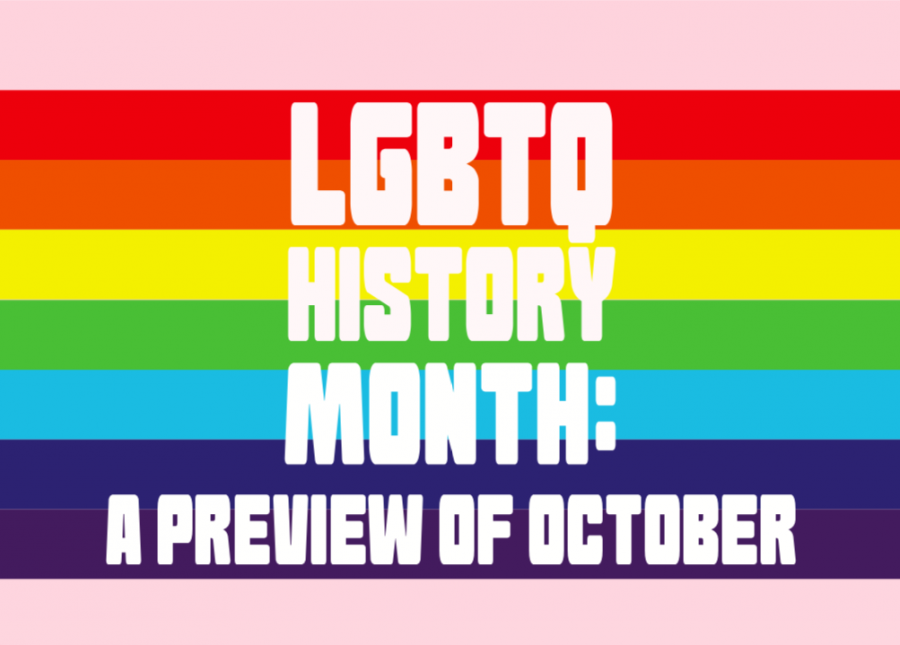LGBTQ History Month: A preview of October
October 7, 2020
Even amidst the ongoing pandemic, the University’s various resources and organizations on campus have tried to make campus life as normal as possible. Part of creating a “normal” atmosphere at the University is continuing to recognize and celebrate LGBTQ+ rights. As October is LGBTQ History Month, it is only fitting to consider the long, arduous path in achieving these rights and the work that still needs to be done.
What is LGBTQ History Month?
LGBTQ History Month is an annual observation of lesbian, gay, bisexual, transgender and queer history, alongside observing the history of the gay rights and civil rights movements. One of the goals of the month is to spread awareness and public understanding of the complexity of sexual orientation and to extend recognition of sexual orientations beyond gender binaries. In addition, the month promotes awareness of the LGBTQ+ people who have contributed widely to society, whether in social, legal or political roles.
How was the event created?
According to the Gay and Lesbian Alliance Against Defamation (GLAAD)’s website, LGBTQ History Month was first created in 1994 when Missouri high school teacher Rodney Wilson founded the event. At the time of the event’s creation, Wilson was the first openly gay public school teacher in the state of Missouri. Initially, the month of October was chosen for the event because of it’s proximity to National Coming Out Day on Oct. 11., as well as to the anniversary of the first LGBTQ National March on Washington for Lesbian and Gay Right on Oct. 14, 1979. GLAAD’s website says that since the establishment of October as LGBTQ History Month, the month has also included Spirit Day on Oct. 20 (an event during which people wear purple to support LGBTQ youth), Ally Week to celebrate allies against LGBTQ+ bullying, and a remembrance of Matthew Shepard’s murder on Oct. 12, which initiated the Matthew Shepard Hate Crimes Act.
For the 15th anniversary of the LGBTQ History Month celebration, the LGBTQ History Month’s website is praising the achievements of different lesbian, gay, bisexual or transgender icons for each day of the month. This year so far, the website has posted for Russian LGBTQ+ activist Nikolay Alexeyev, the first openly gay African American district judge Deborah Batts, Minnesota representative Angie Craig, poet Emily Dickinson, transgender activist Felicia Elizondo and director and producer Rob Epstein.
History Behind LGBTQ Rights
Although not all of them may have been covered in school, there are several key dates to know in terms of the progression of LGBTQ+ rights. According to CNN, some of these dates include:
The 20th Century
- 1924 – Henry Gerber creates the Society for Human Rights, the first gay rights organization to be recorded
- 1950 – Harry Hay, an activist, founds the Mattachine Society, which created social acceptance for homosexuals as one of the first lasting gay rights groups in the United States
- 1961 – Illinois is the first state to decriminalize homosexuality
- 1969 – The police storming of Stonewall Inn in New York City becomes one of the catalysts for the gay civil rights movement
- 1973 – the American Psychiatric Association removes homosexuality from its DSM-II mental disorders list
- 1974 – Kathy Kozachenko is the first openly LGBTQ official elected to any public office
- 1978 – Gilbert Baker designs and sews the first rainbow flag as a symbol of pride and hope for the LGBTQ community
- 1979 – the National March on Washington for Lesbian and Gay Rights is the first of its kind, attracting 75,000 to 125,000 people
- 1995 – The Hate Crimes Sentencing Enhancement Act is issued in 1994, enforcing harsher sentences if victims were selected due to their race, color, religion, national origin, ethnicity, gender, disability or sexual orientation
- 1996 – Hawaii is the first state to refute former President Bill Clinton’s Defense of Marriage Act, citing that the state cannot withhold the right of same-sex marriage from couples
The 21st Century
- 2004 – Massachusetts holds the first legal same-sex marriage in the United States
- 2011 – The ban on gay men and lesbians from serving in the military is revoked
- 2012 – The Democratic Party is the first major U.S. political party to support same-sex marriage on a public stage at the Democratic National Convention
- 2013 – United States v. Windsor rules that legally married same-sex couples are rightfully able to receive federal benefits
- 2015 – The U.S. Supreme Court declares same-sex marriage legal in all 50 states
- 2016 – U.S. President Barack Obama announces the Stonewall National Monument, the first national monument dedicated to LGBTQ+ rights
- Jun. 2020 – The Supreme Court rules that LGBTQ+ workers are protected from discrimination under federal law
- Aug. 2020 – The 4th Circuit Court of Appeals rules that policies segregating transgender students from their peers are unconstitutional
Although these are not nearly all of the milestones in the fight for LGBTQ+ rights, this is but a snippet of the progress we have made over the past decade. However, that is not to say that this progress is nearly completed. All of us — whether University students, family members or members of the local community — must continue to fight for the rights of ourselves and others, regardless of whether or not we identify with a specific group. In order to continue our success and make sure we are on the path to more success in the future, we should celebrate LGBTQ month this October, remain active and supportive and refuse to be complacent.






















